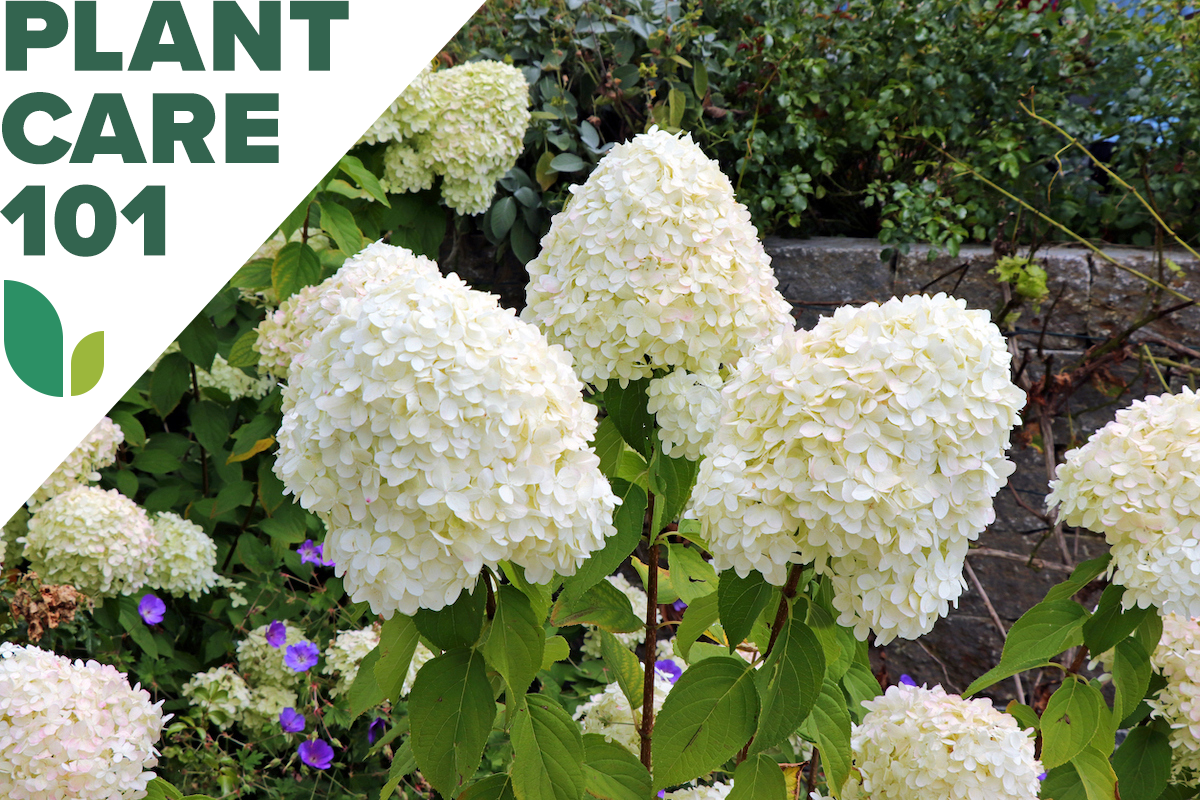

We may earn revenue from the products available on this page and participate in affiliate programs. Learn More ›
Hydrangeas are among garden favorites—whether because of their large, showy flowers or the fact that they bloom summer through fall while other plants may fade away. Perhaps one contributing factor to their popularity is that hydrangea care is relatively simple. They are one of the easiest flowering shrubs to grow, and, as a fast grower, provide results quickly. There are enough types, sizes, colors, and flower forms of hydrangeas to offer almost every gardener the perfect option.
Growing Hydrangeas at a Glance
Common Name: Hydrangea
Scientific Name: Hydrangea spp.
Hardiness Zone: 3 to 9
Soil: Any type; pH determines color of blooms
Light: Partial to full
Water: Once to twice per week—more in drought, less during rainy periods
Food: Not needed; too much fertilizer curtails blooming
Propagation: Stem cuttings or rooting branches
Safety: Toxic to humans and pets
Hydrangea Characteristics
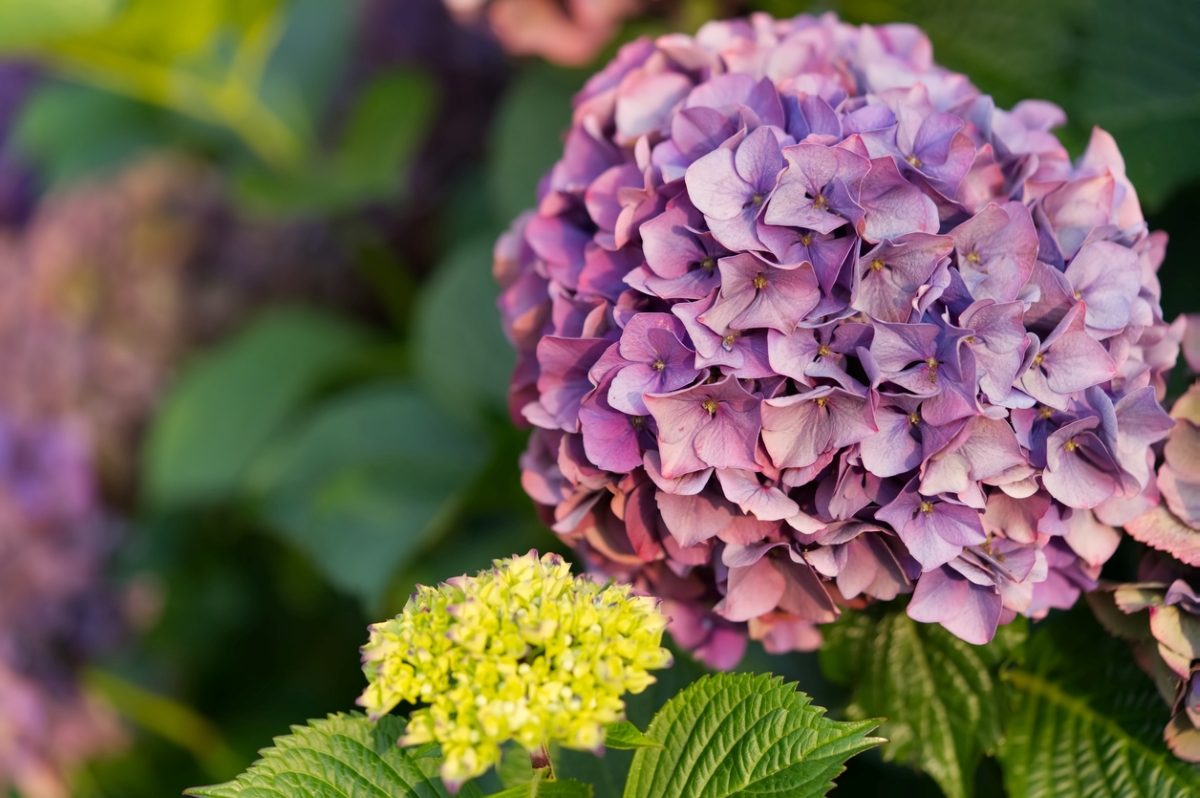
Hydrangeas have been around since the days of the dinosaurs. Today, there are more than 70 species of this Western U.S. and Canadian native. The deciduous woody-stemmed shrubs produce large, show-stopping blooms, the color of which is influenced by the soil’s pH: Up to 6.0 pH results in blue flowers, while a pH of 7.0 or higher turns blooms pink. According to folklore, blue hydrangea flowers symbolize remorse and gratitude, while pink hydrangea flowers signal romance.
Hydrangeas are fast-growing plants, adding up to 2 feet per year until reaching up to 15 feet high and 20 feet wide, depending on the variety. Pruning hydrangeas is necessary, either after summer blooming or in late winter, based on whether the type blooms on new or old wood. Although the plant’s roots are known for their medicinal benefits (to treat stomach ailments, coughs, and more), the entire plant can be toxic to people and pets.
RELATED: 11 Florals That Will Give Your Garden an English Cottage Feel
Recommended Hydrangea Varieties
There are five types of hydrangeas: bigleaf or French hydrangea, smooth (tree) hydrangea, panicle, oakleaf, and climbing. Within those categories of hydrangea bushes, there are more than 600 cultivars. That can make it tough to choose, but here are some great options to consider:
- Macrophylla (H. macrophylla): Endless Summer Twist-n-Shout (H. macrophylla ‘PIIHM-I’) is a blue lace cap that earned its name because hydrangea flowers rebloom on both old and new wood from summer until frost. A medium-size shrub of 3 to 5 feet tall, it makes an excellent specimen plant in Zones 4 through 9.
- Smooth (H. arborescens): Annabelle is a classic “snowball” hydrangea shrub with large 8- to 12-inch white fluffy flower heads on new wood from early summer to fall. A cold-tolerant hydrangea, it grows 3 to 5 feet tall and prefers partial shade.
- Panicle (H. paniculata): Bobo (H. paniculata ‘Bobo’) is a dwarf variety covered in large white conical flower heads on new wood from midsummer to fall. Growing to only 2 to 3 feet high and a little wider, it makes it a good choice in the landscape or in a container garden, where it prefers full sun to part shade.
- Oakleaf (H. quercifolia): Gatsby Pink produces bright-pink conical clusters on old growth in summer that deepen in color in fall. Thriving in sun or light shade, it reaches 6 to 8 feet tall.
- Climbing (H. anomala): Miranda (H. anomala petiolaris ‘Miranda’) can grow more than 30 feet and requires support. A slow-growing plant, it might take years to flower, but its fragrant white flowers that look like small lace caps are worth the wait. Variegated leaves give way to exfoliating bark to add winter interest.
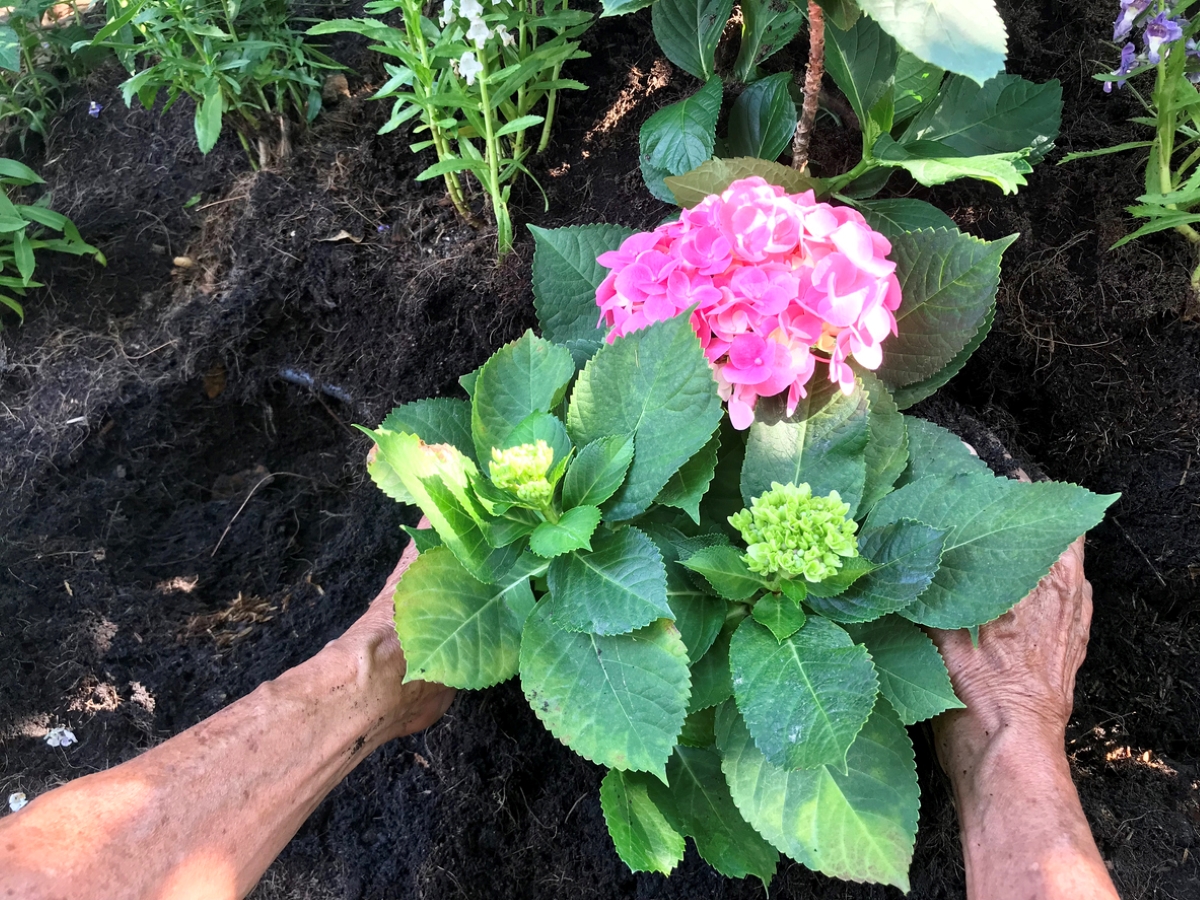
Planting Hydrangeas
Choosing the right location and planting hydrangeas correctly will ensure years of floral beauty in your landscape.
When is the best time to plant hydrangeas?
The best time to plant hydrangeas is in fall. The second-best time to plant them is spring. Either season provides the plant time to develop a healthy root system before producing flowers. Early morning and late afternoon are the best times of day to plant because temperatures are cooler and won’t stress the shrub as much.
Where can hydrangeas grow?
Most hydrangeas prefer partial sun. The gentle light of a sheltered or eastern exposure with protection from harsh afternoon glare offers an ideal location. Many homeowners plant the shrubs next to their homes or in front of fences. Some create a hydrangea garden with several types, bloom colors, or heights in a bed. Hydrangeas need some protection from winds, but they shouldn’t be planted directly below trees where they will compete for water and nutrients.
How do you plant hydrangeas?
Planting hydrangeas follows typical shrub-planting steps.
- Dig a hole 2 feet wider than the root ball and as deep as the root ball, so it sits level with or slightly higher than the soil in order to encourage drainage.
- Remove the plant from its pot and loosen the roots.
- Fill the hole halfway with soil (and up to 15 percent organic compost).
- Water.
- After the water has been absorbed, finish filling the hole with soil.
- Water thoroughly.
Can you grow hydrangea in containers?
Some dwarf varieties are suitable for growing as potted hydrangeas. Select cultivars that grow only 2 or 3 feet tall. If you plan to leave them in the container year-round, choose types that are at least two USDA hardiness zones lower than where they’ll live. Be sure to water sufficiently, making sure the container has drainage holes.
Watering Hydrangea
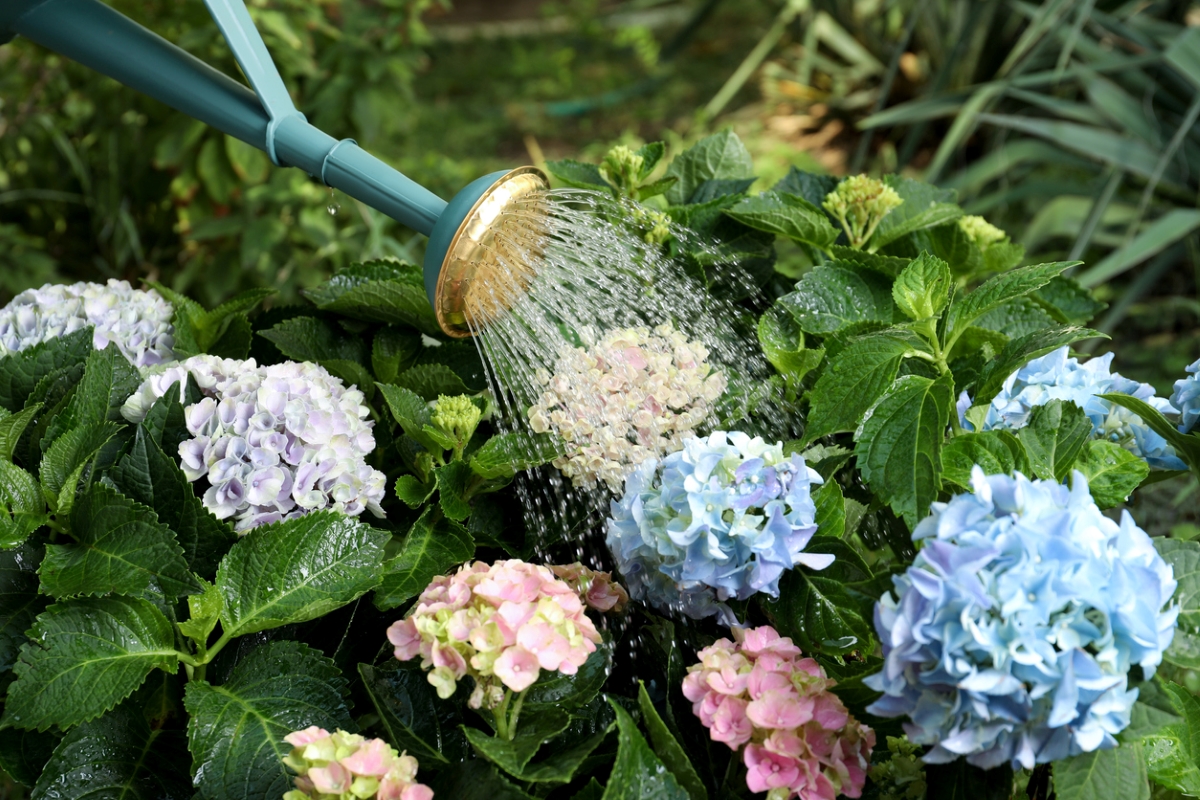
Hydrangea watering isn’t complicated. Water plants deeply three times a week throughout the growing season for the first year or two after planting to encourage root growth. Plants require 1 inch of water per week. During periods of drought, water enough to keep hydrangeas alive; bigleaf and smooth hydrangeas in particular might need extra irrigation. Potted hydrangeas may need daily watering. If the leaves are wilting, the plants are dry. Watering in the morning helps get hydrangeas through the heat of the day. Water at the base of the plant, avoiding the flowers and leaves.
RELATED: 17 Drought-Tolerant Plants That Can Survive Dry Spells
Fertilizing Hydrangeas
Unless your soil is poor, you probably won’t need to fertilize your hydrangeas. In fact, too much fertilizer, especially one high in nitrogen, results in leaf growth instead of flowers. If a soil test indicates the need for fertilizer, the best time to fertilize hydrangeas depends on the variety. Bigleaf hydrangeas should be lightly fertilized in March, May, and June. Oakleaf and panicle varieties should get fertilized in April and June. Smooth hydrangeas need only one application in late winter. In any case, an organic, slow-release fertilizer is the best choice.
Pruning Hydrangeas
Caring for hydrangeas includes careful pruning at the right time. When to trim hydrangeas depends on the variety. Prune those that bloom on new growth in late winter or early spring before new growth starts. Those that bloom on old growth should be pruned after blooming, which gives them time to develop “old” wood before the next season to support plenty of buds. It also might be necessary to remove dead and crossing stems or to rejuvenate the shrub by removing up to one-third of the old stems. Deadheading encourages more blooms.
Propagating Hydrangeas
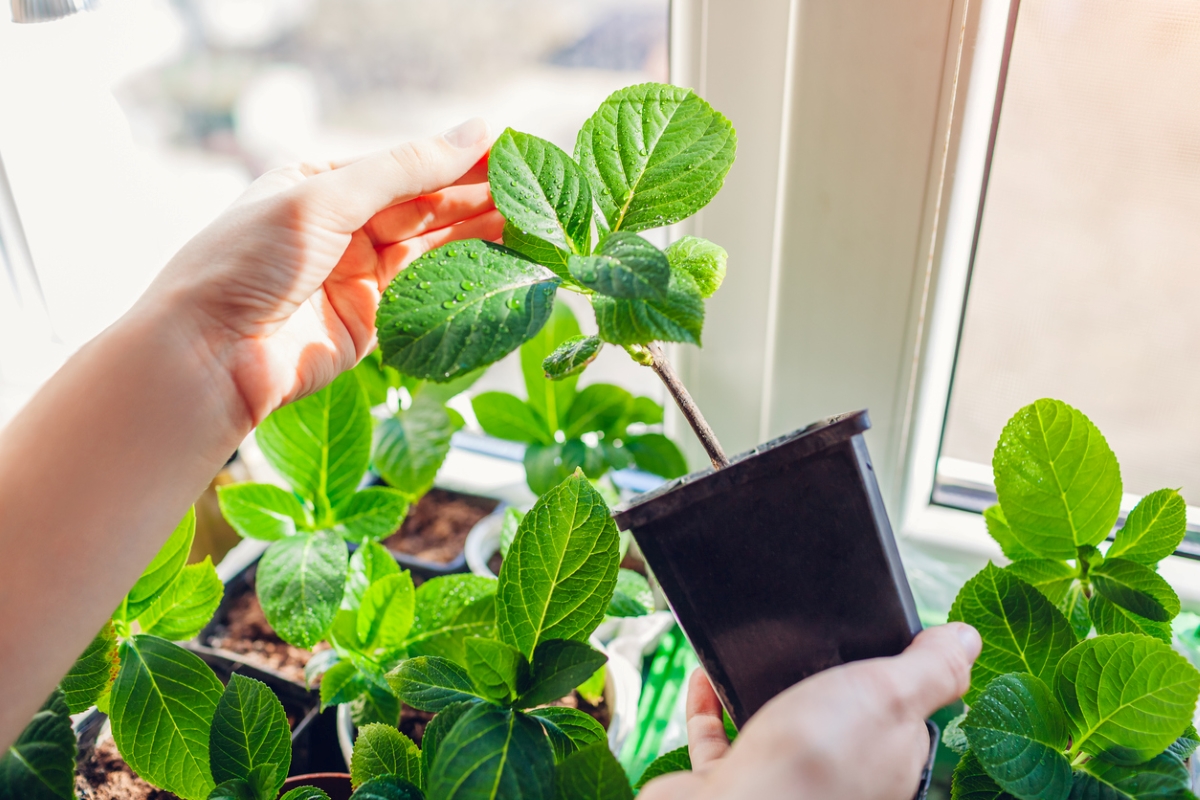
When growing hydrangeas, sometimes more is better. Because hydrangeas rarely produce seeds, propagation is a method of reproducing your favorite plants. Bigleaf and panicle hydrangeas can be propagated through layering by bending a branch to a trench dug next to the plant. Scrape the branch where it makes contact with the soil, backfill, and weigh it down. It will develop its own root system, ready for transplanting.
Smooth and oakleaf hydrangeas set out shoots through underground stems. Gardeners can dig them up and transplant them. It’s also possible to propagate hydrangeas by stem cuttings in the fall, taking from new growth and covering the planted stems to create a mini-greenhouse effect until roots develop.
Safety Considerations
All parts of hydrangeas are toxic to humans, cats, dogs, horses, goats, cows, rabbits, and other livestock. Even dried hydrangea leaves and blooms are toxic. When ingested, cyanogenic glycoside is metabolized and produces cyanide. Cyanide is toxic to all mammals. Buds and new leaves contain the highest level of the toxin.
Symptoms of hydrangea poisoning include nausea, vomiting, abdominal pain, diarrhea, fatigue, stiffness, seizures, depression, loss of appetite, coma, and heightened heart rate and body temperature.
Potential Pests and Diseases
Although hydrangeas generally are not subject to serious diseases or pest problems, Japanese beetles, aphids, and spider mites can affect the plants. In addition, rose chafer pests can cause harm by eating the leaves. Applying insecticidal soap (or chemical insecticides as a last resort) can rid the plants of these pests, but avoid their use when the shrubs are in bloom.
Diseases affecting hydrangeas include botrytis blight, powdery mildew, and yellow or brown leaf spotting. Treating with a fungicide should resolve most of these. Any plants infected with viral spotting should be destroyed.
Preparing Hydrangeas for Winter
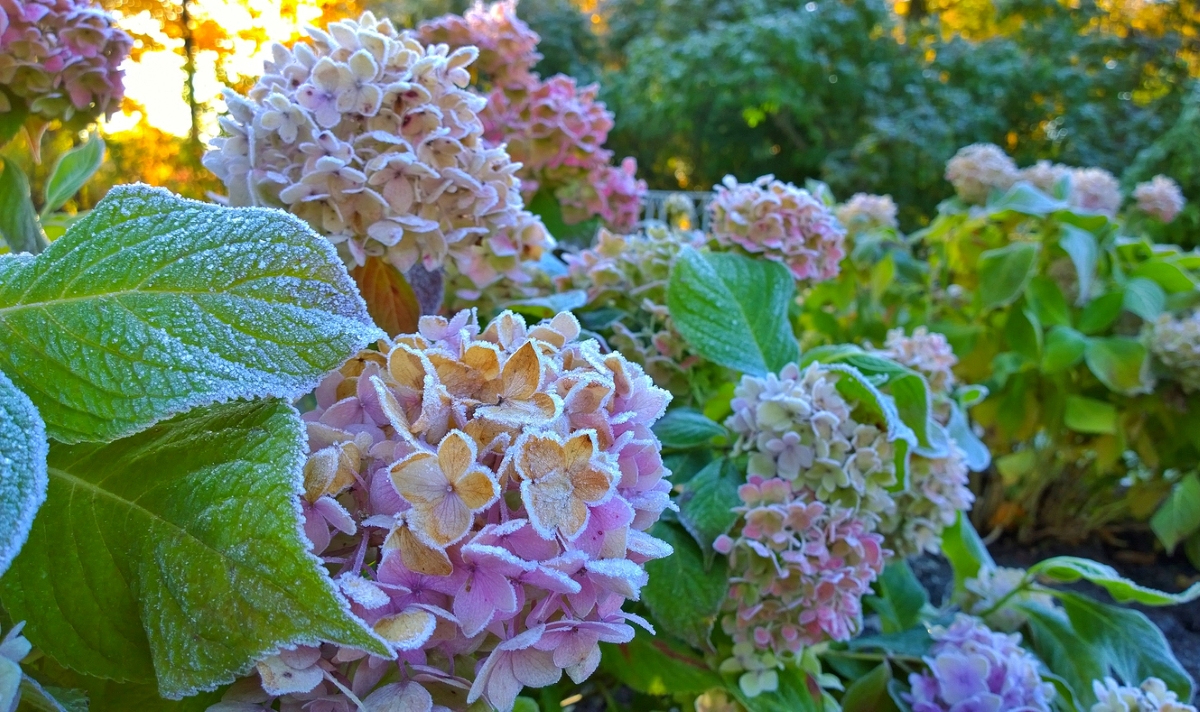
Hydrangeas are perennial plants, but keeping hydrangeas in winter requires some preparation. Bigleaf types can be susceptible to winter bud damage. In particularly cold regions where winters are harsh, wrap the shrubs in burlap or put up burlap screening for protection from wind. Cover the ground around all varieties of hydrangea with 18 inches of a natural mulch such as straw or leaves (avoid maple leaves, which can form a dense mat when wet).
Some experts advise making a cage or A-frame structure to cover the entire plant. Continue watering until the ground freezes and dress the soil with compost to provide food for the winter.
Looking for more flowering shrubs? Check out our guides on growing shrubs for the front of the house, shrubs that thrive in hot climates, and 25 shade-loving plants.
